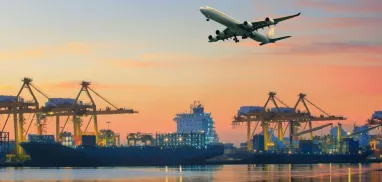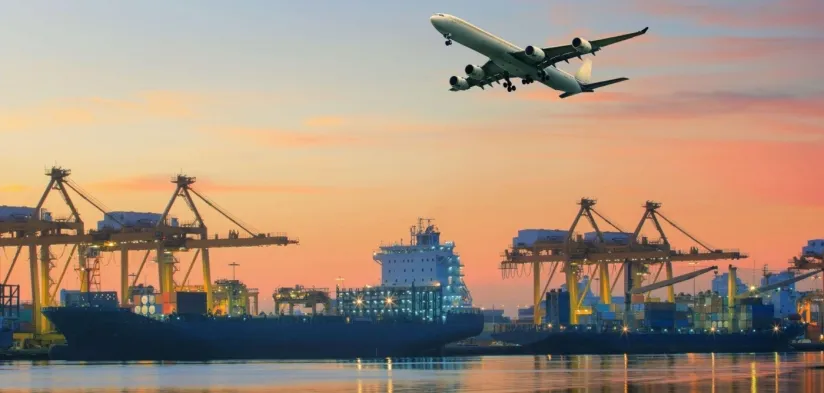Top 4 Logistics Trends to Watch Out for in 2024 & Beyond


Logistics is an integral part of almost every business. In the post-pandemic world, the global logistics sector still faces disruptions and challenges that require immediate action from business leaders. These disruptions have resulted in major delays in logistics operations, particularly in the sea freight sector (See Figure 1).
Figure 1. Shipment delays from China to the US from 2019 to 2021
These challenges have forced logistics managers to rethink their strategies. As the logistics sector changes to overcome these challenges, new trends in the industry can be observed.
This article explores the top 4 current and future trends that will be observed in the logistics sector.
Collaborative logistics
This is one of the most prominent trends that has emerged amidst the global pandemic. Now organizations operating in the logistics sector are focusing on collaborative efforts to overcome the current industry challenges.
Data sharing
As businesses expand into global operations and become more international, data sharing is becoming crucial for having more visibility across the value chain.
In the cold chain logistics sector, companies are now moving towards a more collaborative approach rather than a contractual one by focusing on sharing data and key performance indicators (KPIs) to increase efficiency in the sector.
Another example is the freight logistics optimization works (FLOW) initiative which is a data-sharing platform introduced by the US to reduce port congestions, supply chain bottlenecks and streamline global logistics operations.
Automated logistics
Automation is another digital trend that will continue to revolutionize the present and future of the logistics sector.
Warehouse automation
Logistics managers are increasingly automating repetitive and risky warehouse tasks such as inventory counting, movement of heavy items, inspecting goods, etc. The global warehouse automation market is projected to increase to $30 billion by 2026 from $8 billion in 2012.
Take a look inside Amazon’s automated smart warehouses:
Transport automation
As the most widely used mode of logistics, road transport automation is also becoming increasingly popular as logistics managers seek efficiency and productivity through autonomous vehicles. The autonomous vehicle market is projected to increase almost tenfold to $11 billion by 2028.
Automation can be an expensive technology to implement in a business. It requires substantial investments and a transformation of existing systems and the workforce. Therefore, logistics managers need to study and assess the short and long-term benefits of such investments to ensure maximum return.
To learn more about how to implement such digital technologies in your business, check our comprehensive article.
Multimodal logistics
Another trend that will be observed in the future is the use of multimodal logistics. Multimodal or multichannel logistics refers to the use of a combination of all modes of transportation, including road, sea, air, and rail, to ship goods. As recent events have identified the vulnerabilities of the logistics sector, logistics managers are trying to reduce the dependency on one mode of shipping.
Relying on a single mode of transportation can create serious disruptions if that mode fails. For example, the Suez Canal blockage by a container vessel caused serious delays and disruptions throughout the industry.
More logistics service providers will be using a multichannel logistics model to mitigate this risk.
Green Logistics
Sustainability is another trend that will be prominent in the future. As international agreements put more pressure on governments and organizations, logistics companies will continue to make more effort toward decarbonizing their operations.
Some ways of achieving sustainability in the logistics sector include:
- Switching to alternative fuels and renewable energy is an effective way of reducing CO2 emissions. DHL has initiated a sustainable fuel project by using Bio-LNG in its semi-trucks to achieve around 85% of CO2 emissions reduction.
- Electric trucks are also proving to be effective in reducing GHG emissions. Volvo recently performed a heavy-duty electric truck test in Germany for a long-distance delivery with zero emissions.
As logistics managers plan to add electric trucks to their road transport fleet, they must consider the energy sources in the region the trucks will operate to get a true calculation of their carbon footprint.
To learn more about calculating your carbon footprint, check out this quick read.
Watch how Wallenius Wilhelmsen, a Norwegian/Swedish shipping company, embraces sustainability.
You can also check our data-driven lists of supply chain and logistics optimization tools and services to find the option that best suits your business needs.
Further reading
- 4 Ways to Optimize Logistics Operations
- 4 Ways To Optimize Procurement
- 3 Ways DX Can Strengthen Supply Chain and Logistics
- Top 15 Use Cases and Applications of AI in Logistics
- 3 Ways to Improve Supply Chain with Automation
If you have any questions, feel free to contact us:



Comments
Your email address will not be published. All fields are required.